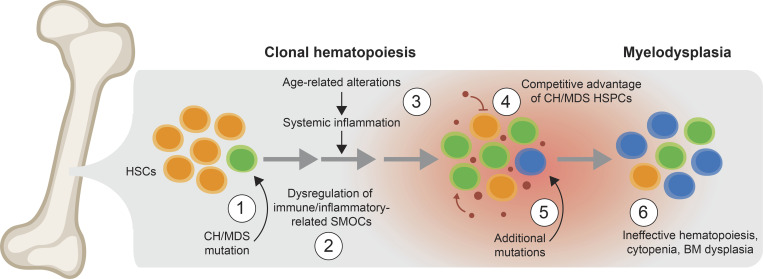Figure 1.
Proposed model of the step-wise progression of clonal hematopoiesis to MDS. (1) An initiating mutation, such as TET2, DNMT3A, or ASXL1, occurs within an HSC (green cell). (2) The mutant (“preleukemic”) HSPCs exhibit dysregulation of key SMOCs that control innate immune and inflammatory pathways. (3) Certain diseases and conditions, such as aging, autoimmune disorders, and chronic infections, can result in systemic inflammation characterized by increased alarmins and/or cytokines. (4) Preleukemic and MDS HSPCs (green cells), which have altered their response to the systemic effects of inflammation as a result of dysregulated SMOCs that control innate immune and inflammatory pathways, gain a competitive advantage over normal HSPCs (orange cells) in an environment associated with chronic inflammation (small red circles represent inflammatory mediators). In contrast, the inflammatory environment suppresses the normal HSPCs. (5) Over time, the mutant HSPCs acquire additional mutations that may lead to MDS (blue cells). (6) At the MDS stage, the mutant HSPCs gain further competitive advantage and exhibit impaired hematopoiesis. CH, clonal hematopoiesis.

